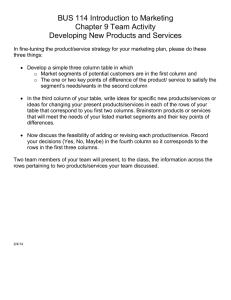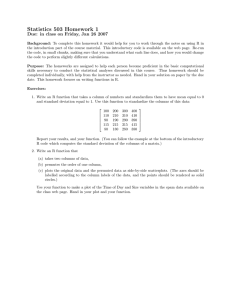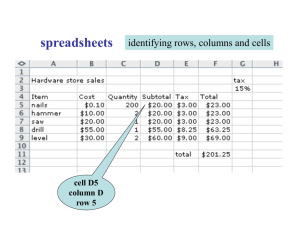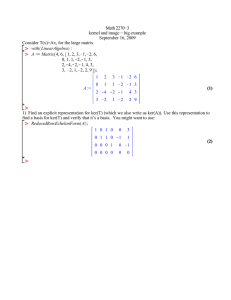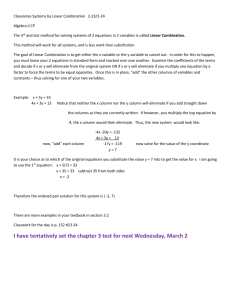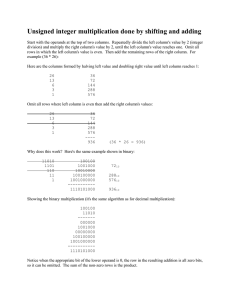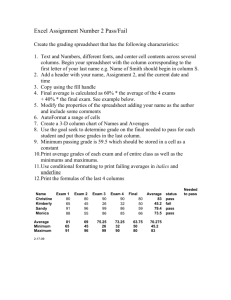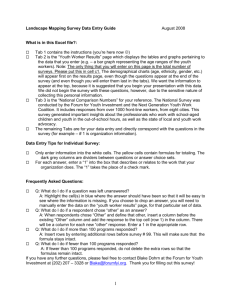Introduction à R
advertisement
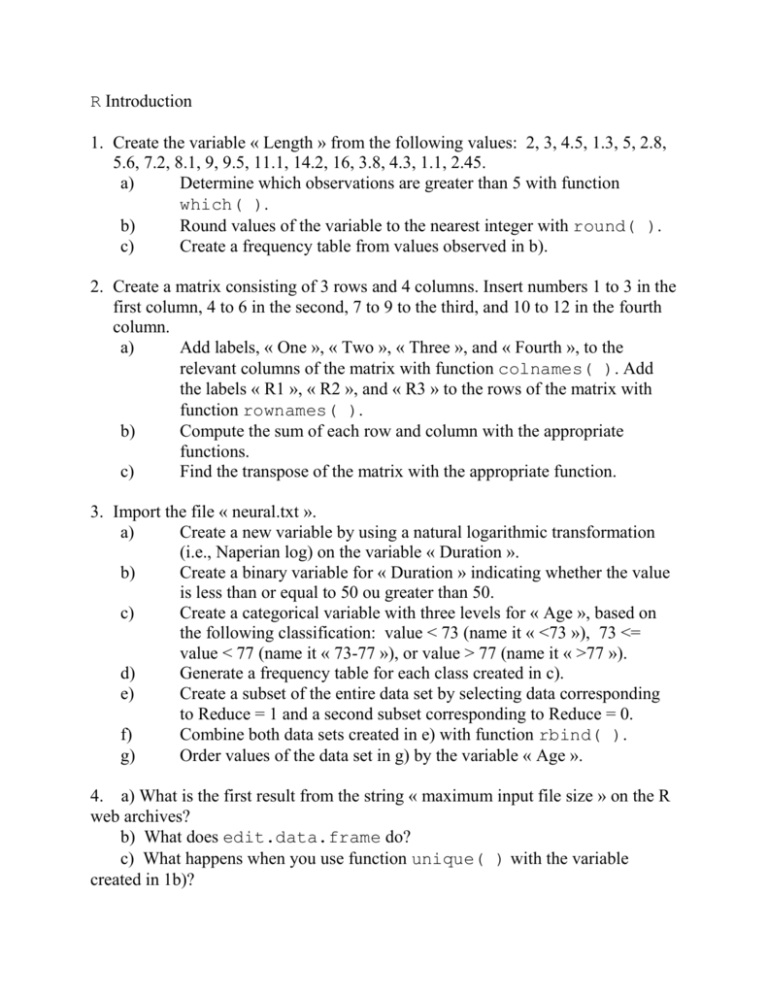
R Introduction 1. Create the variable « Length » from the following values: 2, 3, 4.5, 1.3, 5, 2.8, 5.6, 7.2, 8.1, 9, 9.5, 11.1, 14.2, 16, 3.8, 4.3, 1.1, 2.45. a) Determine which observations are greater than 5 with function which( ). b) Round values of the variable to the nearest integer with round( ). c) Create a frequency table from values observed in b). 2. Create a matrix consisting of 3 rows and 4 columns. Insert numbers 1 to 3 in the first column, 4 to 6 in the second, 7 to 9 to the third, and 10 to 12 in the fourth column. a) Add labels, « One », « Two », « Three », and « Fourth », to the relevant columns of the matrix with function colnames( ). Add the labels « R1 », « R2 », and « R3 » to the rows of the matrix with function rownames( ). b) Compute the sum of each row and column with the appropriate functions. c) Find the transpose of the matrix with the appropriate function. 3. Import the file « neural.txt ». a) Create a new variable by using a natural logarithmic transformation (i.e., Naperian log) on the variable « Duration ». b) Create a binary variable for « Duration » indicating whether the value is less than or equal to 50 ou greater than 50. c) Create a categorical variable with three levels for « Age », based on the following classification: value < 73 (name it « <73 »), 73 <= value < 77 (name it « 73-77 »), or value > 77 (name it « >77 »). d) Generate a frequency table for each class created in c). e) Create a subset of the entire data set by selecting data corresponding to Reduce = 1 and a second subset corresponding to Reduce = 0. f) Combine both data sets created in e) with function rbind( ). g) Order values of the data set in g) by the variable « Age ». 4. a) What is the first result from the string « maximum input file size » on the R web archives? b) What does edit.data.frame do? c) What happens when you use function unique( ) with the variable created in 1b)?

